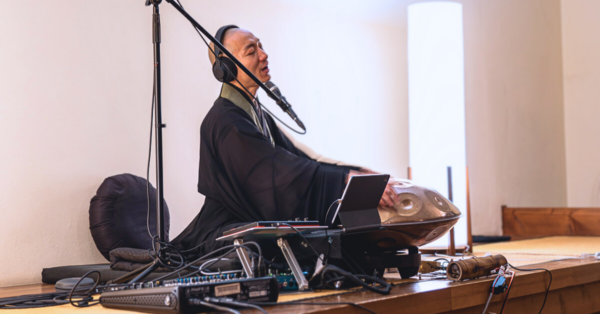
By Tova Green
Recently, Closed Captioning was enabled for all San Francisco Zen Center’s programs, classes, Dharma talks, and meetings, that is, anything presented via Zoom. Dan Belsky, SFZC’s IT Director, and Brendan Crowe, one of SFZC’s Zoom hosts, worked through some glitches to get it functioning reliably.
Brendan had checked for the availability of Closed Captioning and found that Zoom users had to pay for a third party transcription service that wasn’t efficient for SFZC’s purposes. While he was hosting a Zoom program on Unpacking Whiteness, he learned from East Bay Meditation Center’s host that Zoom had begun to provide its own automated transcription, with the qualification that it transcribes only words and terms that are spoken in the English language.
Brendan is impressed by Zoom’s efforts to support users. Zoom can save an entire transcription of an event as well as the visual and voice recording and is planning to make this feature available to all Zoom users this year. He notes that, “When you’re working on making things accessible to a particular group (in this case, those who are hard of hearing or deaf), it ends up being of benefit to everyone.”
Sangha News consulted City Center resident Rev. Keido Keith Baker in preparing this article. Keith, who became deaf while residing at City Center and has been an advocate and resource for offering access to SFZC’s teachings to members of the Deaf Community, commented, “The current offering on Zoom is from the Google AI Transcription Servers. It’s called Closed Captioning by most, but really it’s Live Captioning, or Real Time Captioning. It approaches nearly 100% accuracy when captioning simple English wordings, and about a 75% success rate for ‘off English content.’”
Real-Time or Live Captioning is when a person using Artificial Intelligence (such as Google) translates “on-the-fly,” and usually can only perform a small amount of correction because the speech is always moving forward.
True Closed is either captured beforehand, or keyed in from a script. After it’s done, the script is placed on a movie track made for that purpose. It is then said to be closed, since you need to open it with a subtitle decoder. You can tell the difference in the way that Live Captioning “unrolls” and scrolls up as it feeds. Closed Caption appears a whole sentence at a time, and is usually error-free. When this Captioning is placed on the movie picture itself rather than in a subtitle track, it is said to be open. Open Captioning always appears on the screen and cannot be turned off. It is error free, and has the added benefit of appearing in beneficial places on the screen to help the watcher know who and where it’s coming from.
Open Captioning is the Gold Standard and is what the Deaf Community advocates for, from an equal-opportunity standpoint. The other two work, but they do not distribute the scripts with the same success as hearing people get with ears.
As SFZC works on making the Dharma more accessible to a wider audience, including the Deaf Community and the hard-of-hearing, Keith’s perspective is invaluable.











